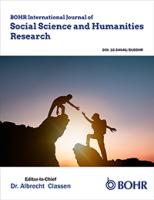Article,
Magical Realism and Romance in Asia: Avenues for Understanding?
BOHR International Journal of Social Science and Humanities Research, 2 (1): 13-23 (2023)
DOI: 10.54646/bijsshr.019
Abstract
The classical Greeks believed that Eros was about erotic love. When we forsake the object of our love, it becomes relegated to the dustbin of memories, which makes it difficult to recover or retrieve. This article discusses how romantic love has been celebrated in works of magical realism in Asia that have evolved to include a range of emotions, political resistance (and questioning state authority and authoritarian personalities), fantasy, delusion, illusion, and fiction. One of the most pronouncedly celebrated works on magical realism was Gabriel Garca Márquez’s Love in the Time of Cholera (1985), which was about patience, perseverance, and emotional endurance. It is a frequent reminder of the need to preserve the memory of the object of one’s love, as it appears to be the only way to ensure that the dead never die. Three years later, Salman Rushdie’s The Satanic Verses (1988) analyzed censorship and religious violence in India (and Pakistan), but incurred the wrath of religious fundamentalists in Iran. Gabriel Garca Márquez’s work was translated from Spanish to English and another 56 languages; it became so influential that many scholars used to believe that magical realism originated from Latin America and from the work of Gabriel Garca Márquez. Others believed that it was from several other Latin American scholars, including George Borges. Before Márquez and Borges, western European scholars said that magical realism originated in Germany between 1919 and 1933, i.e., the Neue Sachlichkeit (or Post-Expressionist) inter-war years, in the work of art critic and historian Franz Roh. Neue Sachlichkeit represented a new but unsettling depiction of a society devastated by war. But this claim is not entirely accurate, as there are other, much earlier claims. Nevertheless, for purposes of this article, magical realism began in Latin America and Mexico, most notably with the work of Gabriel Garca Márquez, who would eventually win the Nobel Prize for Literature in 1982. This article is particularly partial to the influences of Márquez’s Love in the Time of Cholera (1985), which pedestalizes the memory of being devoted to the object of first love and the fragility of life. In one sense, the confusion, massacres, and plagues of Márquez’s narrative reveal the decadent human desire to plot, plan, and massacre fellow human beings, as we are naturally driven by a Godgiven desire to destroy the things that we create. Exactly as God does to man, the article asks us to think about the literature of Asian magical realism in general and of Southeast Asian magical realism in particular. What patterns can be gleaned from a brief survey of how magical realism works in Southeast Asia, and what can those patterns tell us about our strengths and desires within streams of consciousness
Tags
- asia
- consciousness
- delusion
- fantasy
- fiction
- illusion
- indonesia
- magical
- malaysia
- marquez
- non-fiction
- of
- realism
- rushdie
- singapore
- southeast
- stream
- thailand
